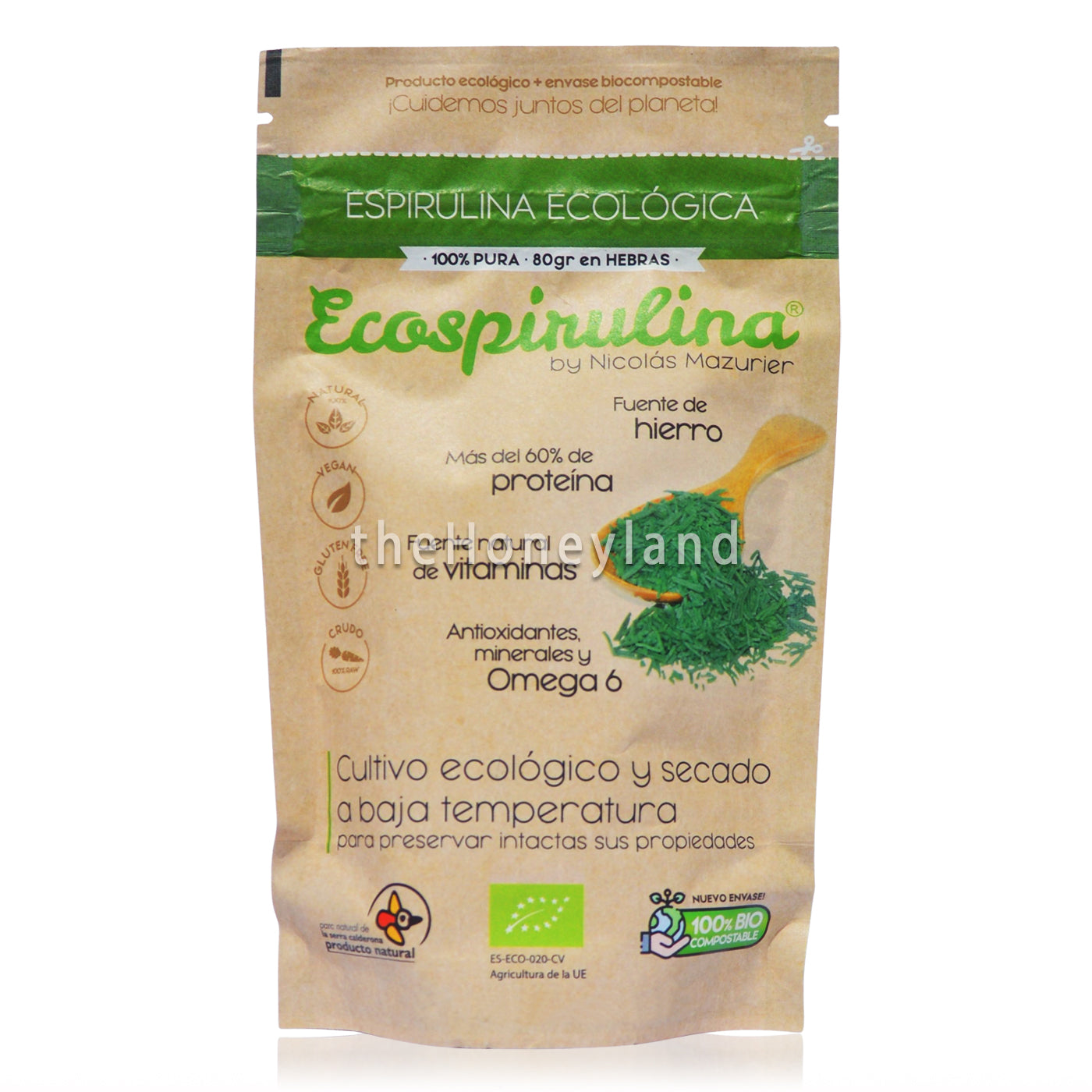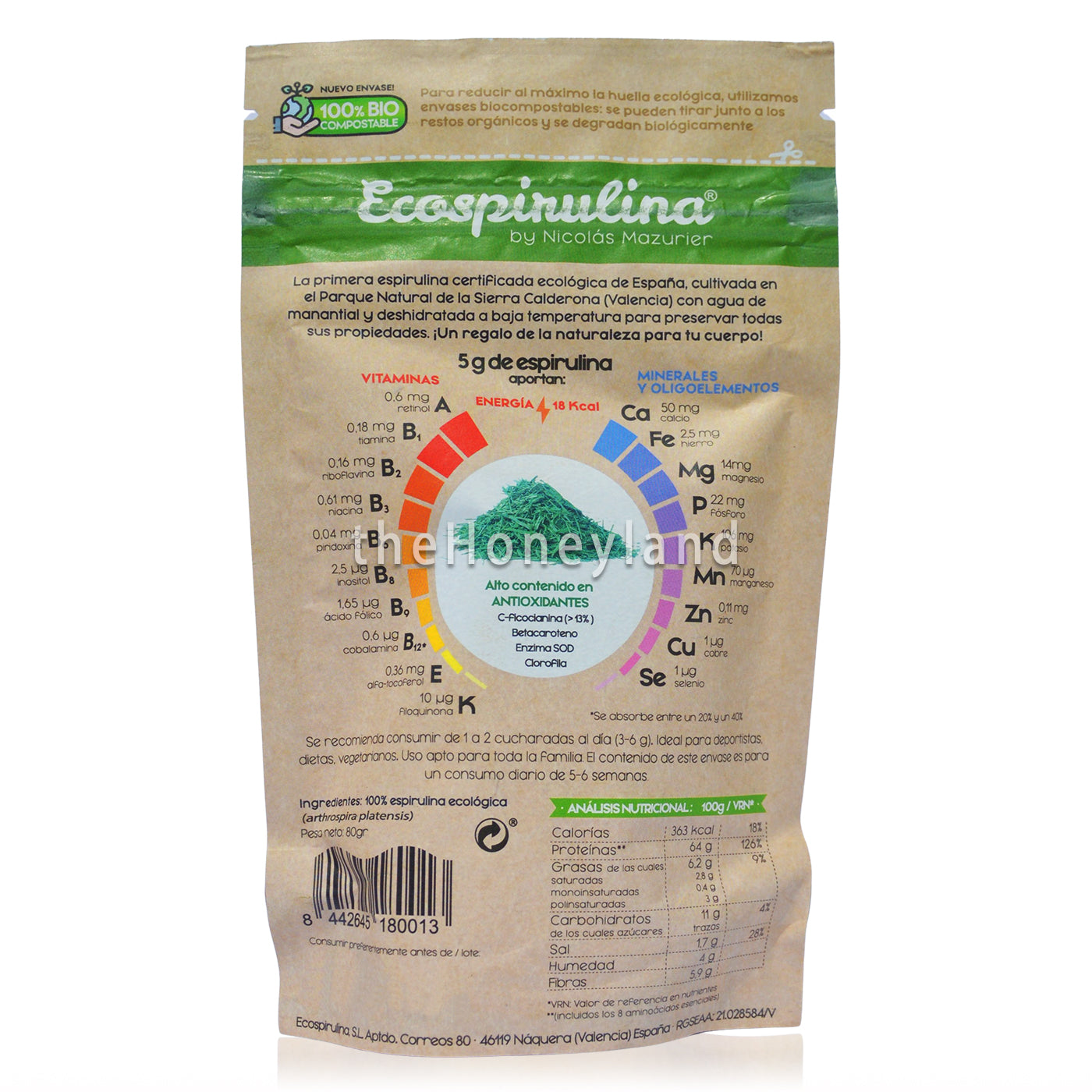Description
Instructions
This spirulina is shaped like small broken spaghetti. It is crunchy and has a flavor reminiscent of pumpkin seeds.
How to consume Spirulina?
It can be combined with other foods. Spirulina threads dissolve easily in liquids at room temperature (smoothies, drinks, vegetable and fruit extracts, yogurt).
If you love their crunchy appearance you can add them to salads or eat them as a snack.
When to take Spirulina?
If you are looking for spirulina to combat fatigue, we recommend taking it in the morning and at lunch, but it can also be consumed in snacks.
Recommended doses:
- Omnivores: 3 g of crunchy spirulina (1 level teaspoon)
- Vegetarians: up to 6 g of crunchy spirulina (2 teaspoons)
- Vegans and Athletes: up to 9 g of crunchy spirulina (3 level teaspoons)
Store in a cool, dry place, away from light and humidity (ideal in the fridge).
The zip bag allows for an almost hermetic closure and eliminates the air that can oxidize the product.
Warnings:
Spirulina naturally contains the amino acid phenylalanine, so it is contraindicated in subjects with phenylketonuria. People with high iron levels should check with their specialist for the correct dosage.
Nutritional facts
| per 100 g | |
|---|---|
| Energy | 1520 kj / 363 kcal |
| Fats | 6,2 g |
| Saturated | 2,8 g |
| Carboidrati | 11 g |
| from which Sugars | 0 g |
| Proteins | 64 g |
| Salt | 1,7 g |
| Fibers | 5,9 g |
| Raw Spirulina Platensis contains 15 times more beta-carotene than carrots, 3 times more protein than beef (including 9 essential amino acids), 4 times more B vitamins than liver (including B12), not to mention a host of minerals and antioxidants! | |
Recycle & Enviroment
-
Compostable packagingBiohumid
Check the regulations of your local municipality.





